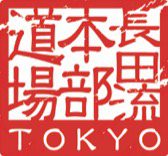The guys over at hojojutsu.com and hobakujutsu.com must have caught on to something. That “something” being that the kanji 捕縄can either be read as Hojo or Torinawa.
Now, nobody knows how Fujita Seiko (藤田西湖) has called it — unless you are privileged to visit the great “beyond” aka that place where our maker dwells and those who used their rope (縄) well are afforded eternal tying opportunities in Heaven. To make a long story short, read this:
Zukai Hojojutsu by Fujita Seiko図解捕縄術藤田西湖著
The ultimate book demonstrating the historical significance of the Japanese tying arts practiced by the Samurai warrior class. Long out of print, this bible on Hojojutsu is a highly sought after collector’s item regularly fetching record prices at online auctions. A limited number of unsold copies in pristine and original condition are now on sale at a special price of JPY 25,000. This special price is bound to increase as the number of unsold copies continues to decrease. Order your very own copy now, as this may be your last chance to obtain this book at a reasonable price.
With hoshu hojojutsu (捕手捕縄術) having been practiced as one of the 18 warrior skills (武芸十八般, bugei juhappan), this book should be of interest to all students of traditional Japanese martial arts. Furthermore, as explained in the “The Beauty Of Kinbaku” (2009) by Master “K”, the more modern tying arts of Shibari (縛り) and Kinbaku (緊縛) trace their origins to this ancient and highly codified martial art, making this book an important resource to all.
Keywords:
Just to demonstrate the sheer complexity of ties and concepts covered, see the following shortlist of terms culled from the first 20 pages of the book.
Hojojutsu,捕縄術(can also be read as torinawajutsu)
Hobakujutsu,捕縛術
Jojutsu, 縄術(sometimes read as nawajutsu)
Torinawajutsu,取縄術
sokei no jutsu, 繰繋之術
togijutsu,伽術
senjutsu,仙術
Honnawa, 本縄
Hayanawa,早縄
Semenawa,責縄
hobakuyo nawa, 捕縛用縄
keibatsuyo shokei nawa, 刑罰用処刑縄
shokei yo kubikiri nawa, 処刑用首斬縄
sarashi nawa, 晒縄
ketsujo, 傑縄
hiaburi nawa, 火焙縄
gomonyo kakushu semenawa, 拷問用各種責縄
shikenyo kakushu shiyonawa, 試剱用各種仕様縄
nawakake hoho, 縄掛方法
taishonawa,大将縄
shisotsunawa,士卒縄
geronawa,下郎縄
nijubishinawa,二重菱縄(in Ittatsu-ryu read as futaebishinawa)
jumonji, 十文字
waribishi,割菱
chigaibishi,違菱
kaminawa,上縄(can also be read as uenawa)
kaeshinawa,返し縄
takaha/taka no hane, 鷹羽
shimenawa,注連縄
toriikakeru,鳥居懸
kyujunnawa,笈循縄
chichigakenawa,乳掛縄
chigonawa,稚児縄
zatonawa,座頭縄
hafujonawa,羽附縄
ashigatamenawa,足固縄
tomenawa,留縄
kainawa, 介縄
okurinawa,贈縄
watashinawa,渡し縄
sarashinawa,晒縄
kubikirinawa,首切縄
kirinawa,切縄
kirinawa/zanjo,斬縄
hasaminawa,剪縄
rakka, 落花
sutenawa,捨縄
kirinawa,伐縄
hitsukenawa,火付縄
hininnawa,非人縄
kaginawa,鈎縄
heinorikagi,塀乗鈎
harinawa,針縄
chizomenawa,血染縄
yokomenawa,横目縄
shirushinawa,印縄
royashikinawa,牢屋敷縄
toriwa, 捕輪
orikakenawa,折掛縄
kajaguchinawa,假蛇口縄
fundonawa,分銅縄
hayatejo,早手錠
A word on kanji readings
Most Japanese kanji have more than one reading, and so do the kanji for rope (縄) and capture (捕). As a result, the kanji combination for 捕縄 (arresting/capturing with rope) can either be read as “hojo” or as “torinawa”.
To further complicate matters, the kanji for rope (縄) within the context of the Japanese tying arts as described in this book can sometimes mean “rope” in the physical sense as in hayanawa (早縄, literally meaning fast rope – the relatively short rope made for an initial arrest and temporary bondage) and as in honnawa (本縄, literally meaning main rope – the relatively longer rope used for more long-term and elaborate bondage). But, the kanji for rope (縄) often also stands for describing a certain technique or type of bondage, such as in taishonawa (大将縄– a bondage meant for higher ranked samurai officers/generals) or in ketsujo (傑縄– a kind of special-purpose bondage).
About the author
Fujita Seiko (藤田西湖), the reputed 14th soke of Koga-ryu ninjutsu, is not only known as a legendary martial artist but also for his research on the ancient warrior arts of the Samurai – not unlike Nawa Yumio (名和弓雄), another “last ninja” and martial arts historian.
Other books by Fujita Seiko include:
Zukai Shurikenjutsu (Illustrated Shuriken), 図解手裏剣術
Zukai Kenpo Gokui Atemi Sakkatsuho (Illustrated Secret Kenpo Killing Strikes), 拳法極意當身殺活法明解
Zukai Shinto Muso Ryu Jojutsu (Illustrated Shinto Muso-ryu Jojutsu), 神道夢想流杖術図解
Note:
Due to the different readings of the kanji combination 捕縄 the title of this book is sometimes also translated as Torinawajutsu.
